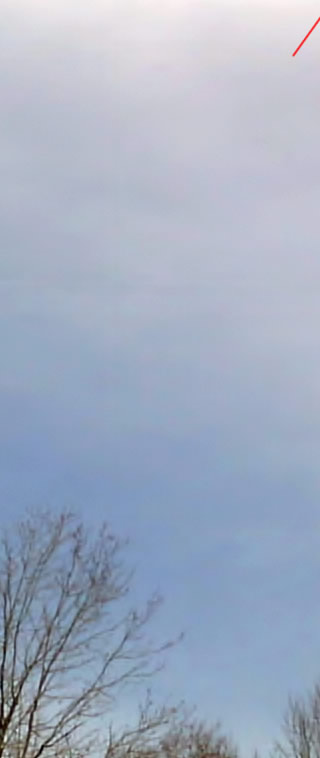| Parhelic Circle & 120° Parhelion Sighted by Dave Rowh in North Carolina. The camera looks west, to the right, of the sun. The bright part of the parhelic circle ends to the right of the 120° parhelion and there is just a hint of the blue spot. Image ©Dave Rowh, shown with permission |










